As sea kayakers, our focus tends to be on the environmental aspects of paddling such as tidal planning, weather and swell or on our dynamic skills out in the waves, in and around the rocks, tide races or in the surf. But focusing some time on our forwards paddling stroke on a calm day, we can bring big improvements that are beneficial to all aspects of our paddling on the sea. The learning never stops and that’s what makes it so exciting and fulfilling.
While I’m certainly not professing to have perfect technique, I hope I can highlight some important principles to help you think about your own technique in order to progress on your journey of developing as a paddler.
An efficient stroke enables us to push our paddling further, to play longer and undertake bigger journeys. Thinking about our technique and combining it with some careful practice is time well spent and reduces the risk of injury or strain on our wrists, elbows and shoulders.
In this article, I’ll look at the breakdown of the high angle paddle stroke and some exercises to practice. Here’s the video I created to show some of the important principles in practice.
Where to practice?
I’m a big believer in practising skills in easy water that we can then put into practice when conditions start to get lively. When we’re suddenly faced with a force six wind, this isn’t generally the ideal time to start developing a new skill, develop or fine-tune an existing one. By this point, you’ll probably have other concerns. So if the conditions are calmer than expected or you’re stuck in the harbour for the day this could be a perfect opportunity to focus on your forwards paddling technique. Get a friend to watch or film you so you can get some feedback in order to analyse your own performance to see what you can develop.
High angle or low angle
All of the same points in the article can be taken and used in the more relaxed low angle forward paddling technique with the sole difference of the top hand being in a lower position. This also means a longer paddle is required. The high angle technique is the most efficient and dynamic style but can put strain on our shoulders if we’re not careful.
The fundamental elements of forwards paddling
The fundamentals of paddlesport are a good place to start and consist of: posture; connectivity; power transfer; and feel. These elements feature in everything we do and when we combine these with the use of the big muscles in the core and legs and the potential energy we create through rotation/pre-rotation and drive through the legs we really start to unlock a huge source of power.
Posture
Before we start, ensure you’re in a pro-active sitting position. This means your hips are slightly tilted forwards to avoid a rounded lower back.
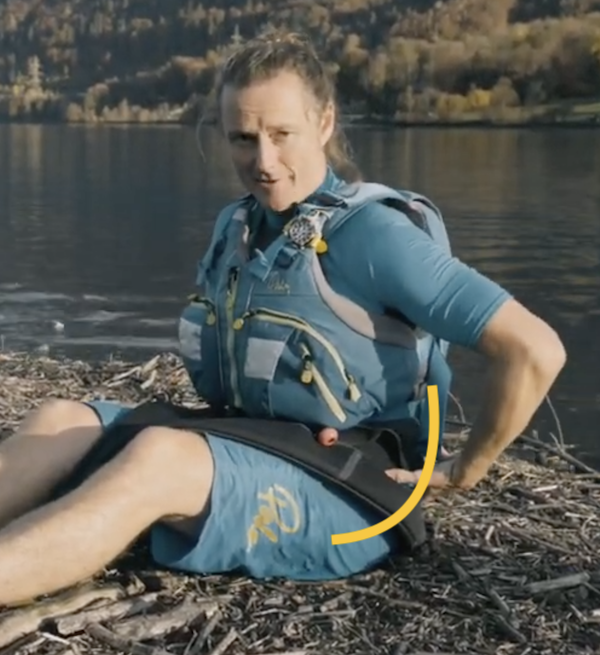
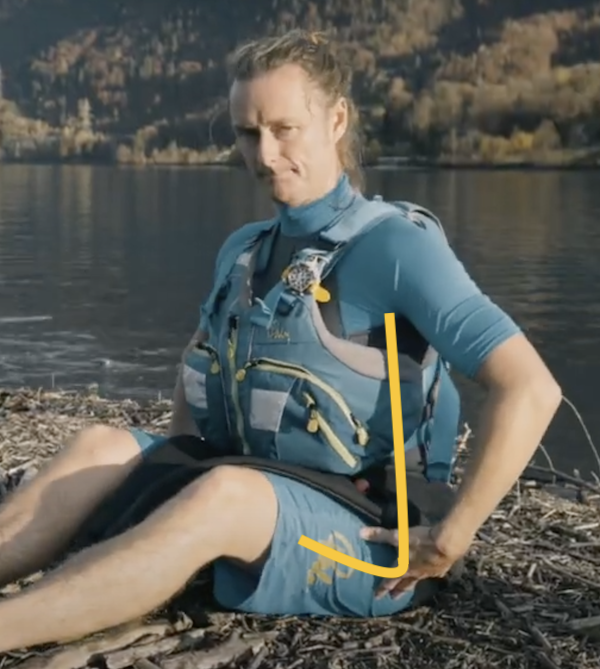
Connectivity
By connection, we’re not just talking about the connection within the boat but most importantly the connection between the paddle and the boat, ie us. By creating tension and ‘locking’ our core we can then efficiently transfer the power from the paddle directly to the boat. If we are not ‘locked’ or ‘tensed’ then this energy gets lost in the body and we can’t engage our big muscle groups in the trunk and legs. This connection runs from the paddle, through the body to the same foot as the side we’re paddling on.

Power transfer
Once we have a good connection between paddle and boat, we can transfer the power from our pre-rotated body as it un-rotates whilst simultaneously driving from the leg directly through to our foot pedal. Imagine that we are pushing the boat forwards, ‘pushing the boat past the paddle’ rather than pulling on the blade. Another way of thinking of it is imagining that the paddle is an anchor or a post in the water that we are pushing the boat past as the potential energy in the twisted body and bent leg is released.
Feel
We need to train ourselves to feel what is going on throughout the stroke. This includes a relaxed grip, good wrist position, feeling the blade cleanly entering the water, finding the resistance in the water, feeling the increase in power through the unwinding of the body and being aware of what part of the body is moving. When we consider ‘feel’, I find it useful to really ask ourselves some questions and close our eyes: Is the movement really coming from the core? Are we really rotating from the hips? Or are our shoulders and arms pulling? Are our legs ‘pedalling’? If you feel like something is hurting or aching this is also your body trying to tell you something.
Rotation / pre-rotation & drive
This is our real source of power – far stronger and superior to what we can do with our arms. When we talk about rotation, this starts right down below in our hips and is linked to our leg movement. It’s not just rotation but actually pre-rotation: winding up of our body as much as we can, and the releasing of this torsion to generate power whilst extending our ‘paddling’ leg to drive the boat forwards. We start as ‘pre-rotated’ as possible to enable a far reach of the blade and then we release to a neutral position (where the paddle leaves the water). We then wind up for the next stroke.
If we forget our arms for a moment, you can try this movement without the blade and focus on your core and trunk.
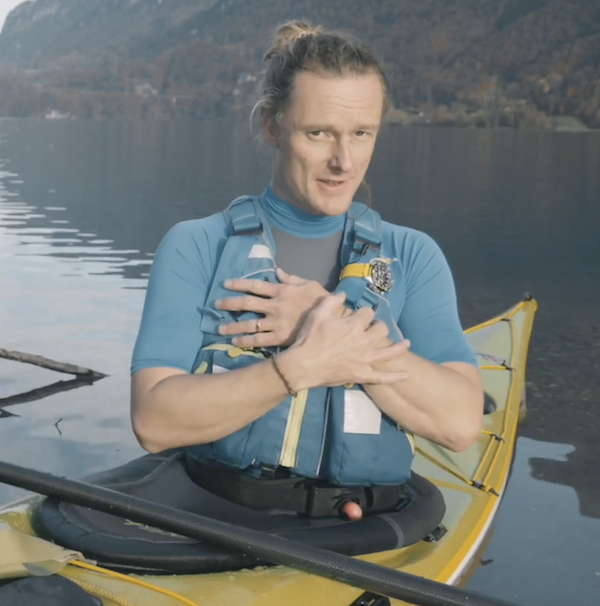

Now when we are feeling the movement in our trunk, we can add our arms. The arms are just an extension of your trunk. They don’t move independently but as one unit. The shoulders and elbows should stay in a relaxed position and remain locked in the ‘safety box’ throughout the power phase of the stroke.
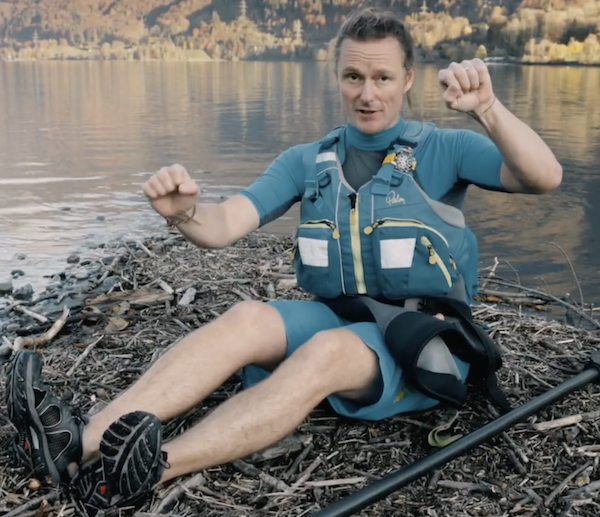
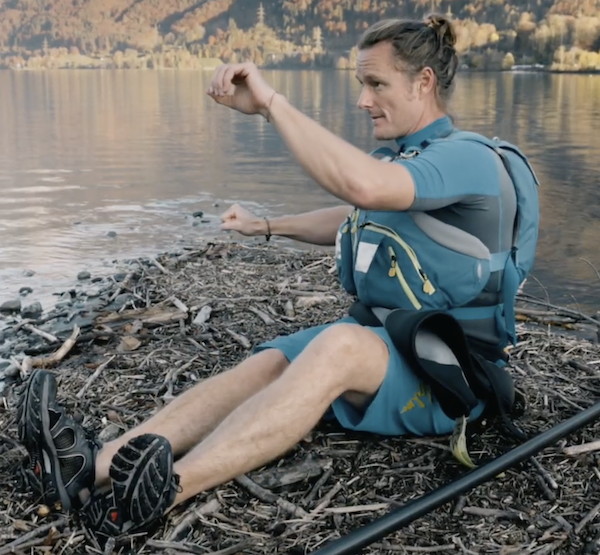
Breaking down the stroke
Before we start, it’s good to check what we’re doing with our hands:
- Are our hands far enough apart on the shaft? When the paddle is placed above but touching our head, our elbows should be more or less at ninety degrees. In the same position as if we were to do a ‘press up’.
- Do we have a relaxed grip on the paddle?
- Does our wrist stay in line throughout the stroke?
In order to reduce the risk of overuse or injury to our wrists and elbows it’s important we have a relaxed grip on the paddle. For me, I try to ‘pull’ the blade with the end of my fingers and ‘push’ the top hand around the body with the blade between the first finger and thumb.
The wrist position is also very important. Ensure the wrist doesn’t drop when pushing forwards and if anything stays neutral or slightly raised above the knuckles. A bent wrist will give rise to wrist problems at some point … trust me, I’ve been there.
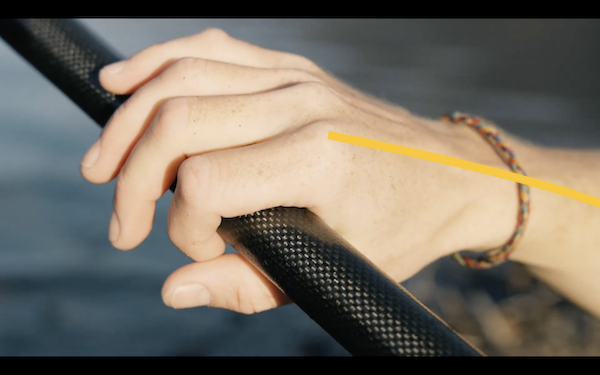
When we over grip the paddle, the wrist bends to the side as seen below. By maintaining a relaxed grip and allowing the blade just to sit between your first finger and thumb we can keep a straight position and avoid this problem.
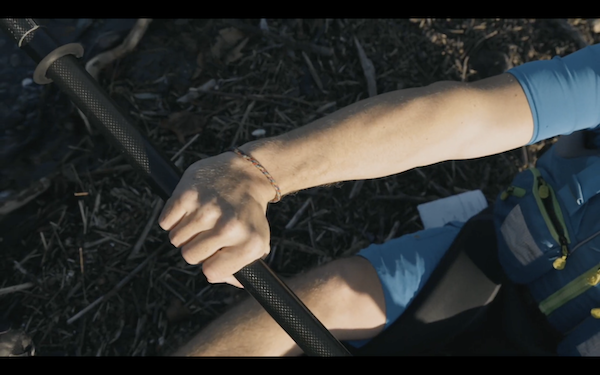
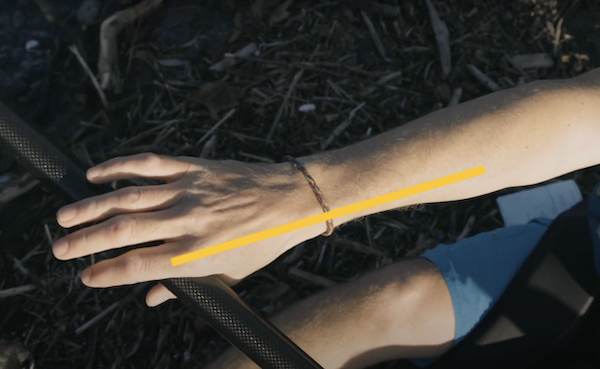
The phases of the stroke
1. Preparation phase & catch
- Pre rotation – winding up the body.
- Stay in safety box – shoulders parallel to the blade.
- First cleanly place the blade in the water with minimal splashing.
- As you connect with the water feel the resistance of the blade in the water, and the blade moving to find it’s optimal position.
2. Power phase
- Body tension – lock body to create connection between paddle and boat.
- Releasing torsion and power incrementally from pre rotated position. See section on rotation above for pictures and description.
- Drive from hip and legs through the foot.
- Maximum power in last part of stroke to enter gliding phase.
- When you have totally unwound your body, the blade should already be at the hips without any need to pull with the shoulders or arms.
3. Recovery and glide phase
- Blade exits around the hips when power is at its greatest initiating the glide phase.
- Blade slices out of the water away from the boat without any breaking effect. Note if the paddle goes beyond the hips, we can no longer add power and it creates resistance by ‘lifting’ water and pushing the nose of the boat more into the water.
- Back of the hand moves towards the ear, bending at the elbow to around ninety degrees at the elbow.
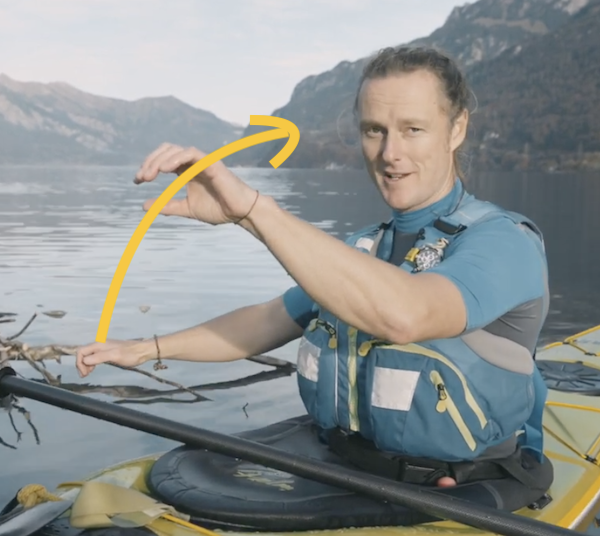
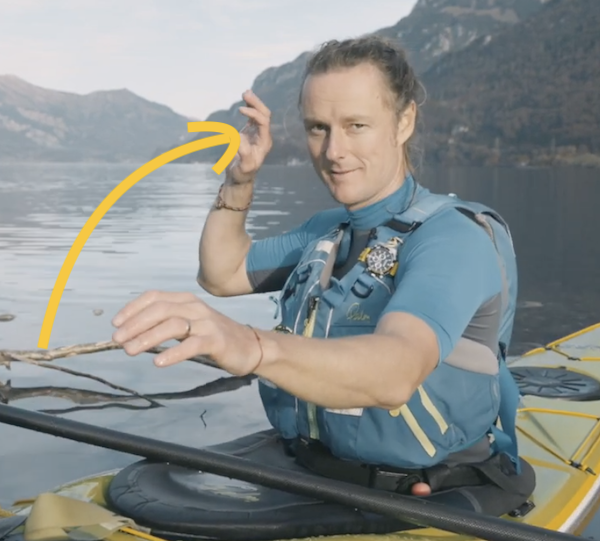
Useful exercises
Useful exercise No.1: paddling with straight arms
Many of us have seen or heard of this exercise and it really is a great one to get the feel of the trunk rotating away even if it does feel awkward and hard work. Important is that we keep the blade and shoulders parallel at all times and don’t work from the shoulders, but imagine the upper body as one unit. Start by doing the movement just in the air focusing on your trunk and then start with short strokes in the water.
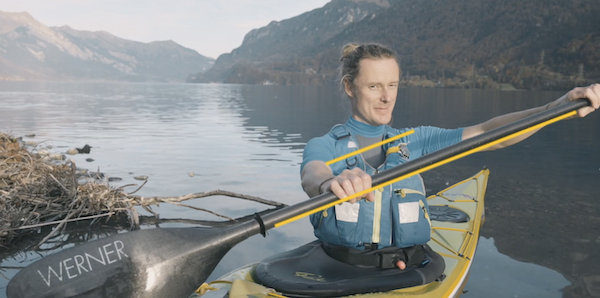
Useful exercise No.2: top hand over the horizon
This exercise focuses on the path of the top hand throughout the stroke. Keep it on the horizon line and move it across to the other side of the boat or to above your opposite knee. This leads the torso in the rotational movement. Note this movement is around your body rather than pushing your hand forwards in front of you. This helps by getting your torso rotating and you should feel an increase in power.
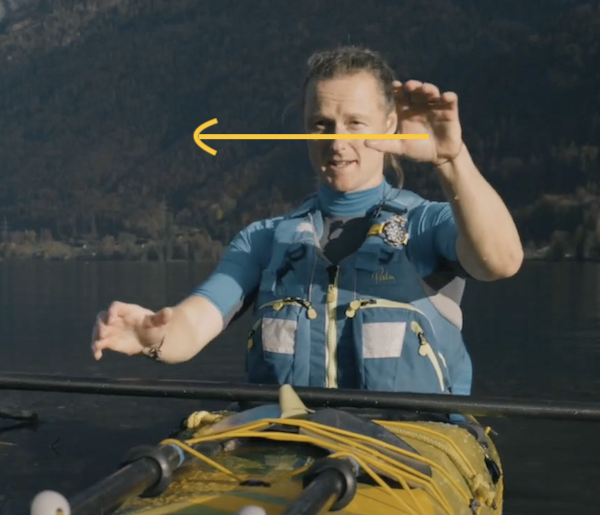
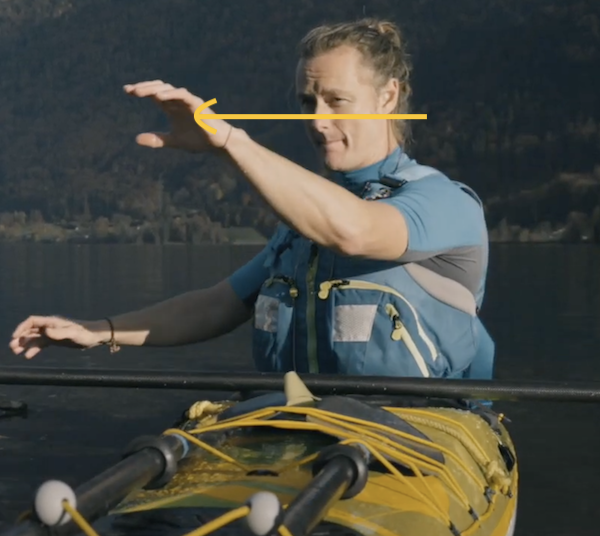
Note: If the top hand starts high and drops down while it crosses the boat, this pushes the paddle further behind the boat. This creates more resistance by lifting water and forces your shoulder and arm into action.
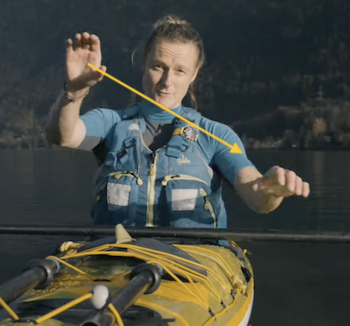
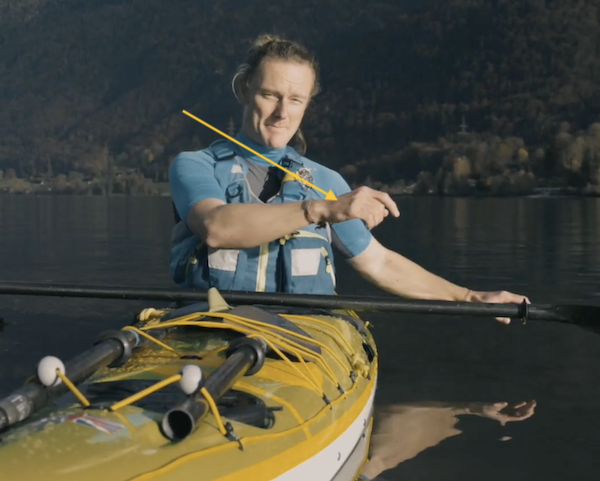
Self learning: experiment away and ask yourself the right questions
I’m also a big fan of experimenting, trying to feel what’s going on and trying to question what I’m doing and develop myself. Using someone else’s eyes or getting a friend to film you can then add the full picture to help us to analyse our performance. Specific questions really help to focus on certain elements of the stroke and can also help you and others guide their observations … try these ones out:
- Do I have an active posture? Try paddling comparing good and poor posture.
- Am I really locking my body before the stroke and driving forwards moving the boat past the blade? Try locking body and comparing it with no core tension. Can you feel a difference?
- Am I rotating or pre-rotating? Try both. What is the maximum pre-rotation I can achieve?
- Am I using my shoulders and arms? Try paddling with arms, with shoulders and then with out them – just using core.
- Does my top hand stay at the same height and travel across the boat? Watch it and compare when the top hand drops and stays at the same height.
- Are my shoulders parallel to the blade throughout the whole stroke? Are you really sure? Test it and watch carefully especially at the end of the stroke.
- When is the power coming onto the blade? Try at the beginning and at different intensities. Start gently and increase to maximum at the end of the stroke.
- Where does my blade leave the water?
- Does my lower arm bend or does it stay the same shape? Try both.
Developing this technique is for sure a long term project but one that if we keep investing in, it will bring us big rewards so have fun experimenting and perhaps see you out of the water.